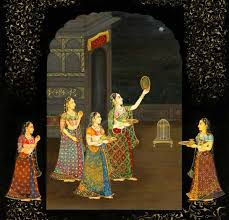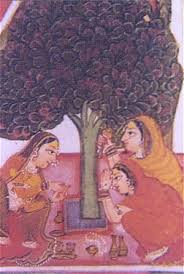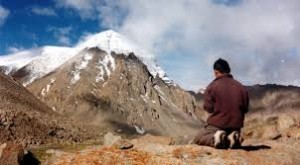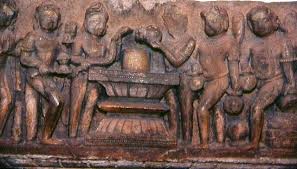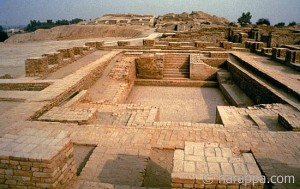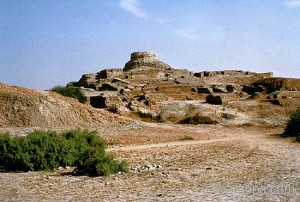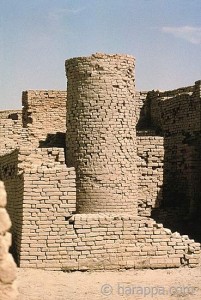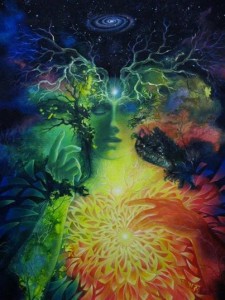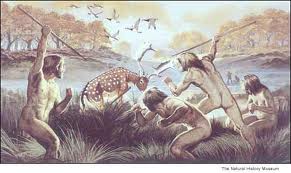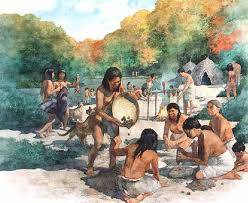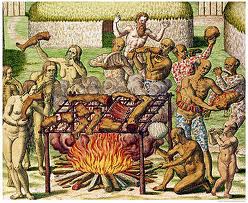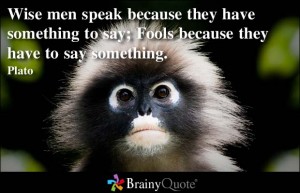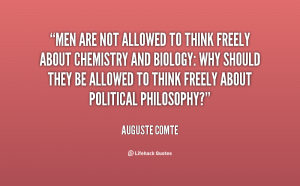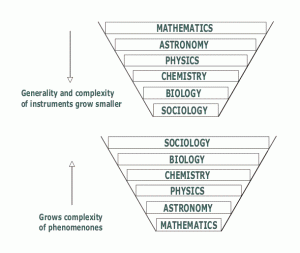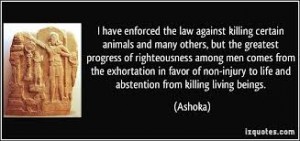Dr. V.K.Maheshwari, M.A. (Socio, Phil) B.Sc. M. Ed, Ph.D.
Former Principal, K.L.D.A.V.(P.G) College, Roorkee, India
Mrs Sudha Rani Maheshwari, M.Sc (Zoology), B.Ed.
Former Principal. A.K.P.I.College, Roorkee, India
 In discussing a subject, Socrates generally sets out from the popular and hastily formed opinions about the attributes of morality. A well-known example will make this clear. By skilful questioning Socrates gets a young man named Euthydemus to confess his ambition to become a great
In discussing a subject, Socrates generally sets out from the popular and hastily formed opinions about the attributes of morality. A well-known example will make this clear. By skilful questioning Socrates gets a young man named Euthydemus to confess his ambition to become a great
politician and statesman. Socrates suggests to him that, in that case, he must, naturally, hope to be a just man himself. The young man thinks he is that already. “We go on with the story
as it is told by Xenophon.
” But, says Socrates, there must be certain acts which are the proper products of justice, as of other functions or skills. No doubt. Then of course you can tell us what those acts and products are? Of course I can, and the products of injustice as well. Very good; then suppose we write down in two opposite columns what acts are products of justice and what of injustice. I agree, says Euthydemus. Well now, what of falsehood? In which column shall we put it? Why, of course in the unjust column. And cheating? In the same column. And stealing? In it too. And enslaving? Yes. Not one of these can go to the just column? Why, that would be an unheard-of thing. Well but, says Socrates, suppose a general has to deal with some enemy of his country that has done it great wrong; if he conquer and enslave this enemy, is that wrong? Certainly not. If he carries off the enemy’s goods or cheats him in his strategy, what about these acts? Oh, of course they are quite right. But I thought you were talking about deceiving or ill-treating friends. Then in some cases we shall have to put these very same acts in both columns? I suppose so.
Well, now, suppose we confine ourselves to friends. Imagine a general with an army under him discouraged and disorganized. Suppose he tells them that reserves are coming up, and by cheating them into this belief, he saves them from their discouragement, and enables them to win a victory. What about this cheating of one’s friends? Why, I suppose we shall have to put this too on the just side. Or suppose a lad needs medicine, but refuses to take it, and his father cheats him into the belief that it is something nice, and getting him to take it, saves his life; what about that cheat? That will have to go to the just side too. Or suppose you find a friend in desperate frenzy, and steal his sword from him for fear he should kill himself; what do you say to that theft? That will have to go there too. But I thought you said there must be no cheating of friends? Well, I must take it
all back, if you please. Very good. But now there is another point I should like to ask you. Whether do you think the man more unjust who is a voluntary violator of justice, or he who is an involuntary violator of it? Upon my word, Socrates, I no longer have any confidence in my answers. For the whole thing has turned out to be exactly the contrary of what I previously imagined.”
Xenophon, Memorabilia, Book IV, ch. 2 (transl. by .Marshall, Greek
Philosophy).
In an attempt to consider all relevant issues associated with the all-pervasive impact of morality on human affairs, it is essential to view this subject from several different perspectives. The basic issue that divides all discussions of morality revolves around the question, is morality an evolutionary human concept? Is Morality a relative and subjective concept, or is morality imposed on humans as an absolute, universal and objective imperative
PERSPECTIVES OF MORALITY
A. Philosophical perspective of morality
Disagreements between atheists and theists in the realm of morality occur across the three major divisions of moral philosophy: descriptive ethics, normative ethics, and metaethics. Each is important and must be approached in differently, Atheists and theists may find broad agreement in the other categories, but there is far less agreement or common ground here. This mirrors the debate between atheists and theists over the proper grounding for beliefs generally and the conflict between faith and reason.
Descriptive Ethics:
Descriptive ethics involves describing how people behave and/or the moral standards they claim to follow. Descriptive ethics incorporates research from anthropology, psychology, sociology and history to understand beliefs about moral norms. Atheists who compare what religious theists say about moral behavior or the basis for morality against how they actually behave need to understand how to properly describe both their ethical beliefs and their actions. To defend their own moral philosophy, atheists need to know how to accurately explain the nature of their moral standards as well as the moral choices they make.
Normative Ethics:
Normative ethics involves creating or evaluating moral standards, so is an attempt to figure out what people should do or whether current moral behavior is reasonable. Traditionally, most moral philosophy has involved normative ethics — few philosophers haven’t tried their hand at explaining what they think people should do and why. Religious, theistic normative ethics often rely on the commands of an alleged god; for atheists, normative ethics can have a variety of sources. Debates between the two thus frequently revolve around what the best basis for morality is as much as what the proper moral behavior should be.
An important feature of morality is that it serves as a guide for people’s actions. Because of this, it is necessary to point out that moral judgments are made about those actions which involve choice. It is only when people have possible alternatives to their actions that we conclude those actions are either morally good or morally bad. This has important implications in debates between atheists and theists because if the existence of a god is incompatible with the existence of free will, then none of us have any real choice in what we do and, therefore, cannot be held morally accountable for our actions.
Essentially, it seems likely that morality can be placed into two major categories. The major difference in these two types of morality is their origin. From either an inductive origin or a deductive origin different modes of morality are formed. Thus philosophically the purpose of morality appear to have three answers :
1. To lead people to behave in accordance with the wishes of a divine authority.
2. To lead people to behave in a way that benefits society at large rather than their own narrow self interest.
3. To lead people to control their desires and aversions in the belief that this will result in a more satisfying, rewarding and contented way of life.
B. THEOLOGICAL PERSPECTIVE OF MORALITY
“Let us with caution indulge the supposition that morality can be maintained without religion. Reason and experience both forbid us to expect that national morality can prevail in exclusion of religious principle.”
George Washington (1732-1799) First President of the USA.
Religion clearly plays an important part in many people’s moral decisions, and for those with a religious faith moral behavior is often seen as being necessary, both as an act of obedience to God’s wishes and as a requirement for spiritual development
Before developing insight into the religious perspective of morality, it will be illuminating to comprehend the basic moral concepts in different religions.
Buddhism: Hurt not others in ways that you yourself would find hurtful. (Udana-Varga 5:18)
The Buddhist view is that moral behavior flows naturally from mastering one’s ego and desires and cultivating loving kindness (metta) and compassion (karuna).
Judaism: What is hateful to you, do not do to your fellow man. That is the entire Law; all the rest is commentary. (Talmud, Shabbat 31a)
Hinduism: This is the sum of duty: Do naught unto others which would cause you pain if done to you. (Mahabharata 5:1517)
Ethics, which concerns itself with the study of conduct, is derived, in Hinduism, from certain spiritual concepts; it forms the steel-frame foundation of the spiritual life. Though right conduct is generally considered to belong to legalistic ethics, it has a spiritual value as well. . Hindu ethics prescribes the disciplines for a spiritual life, which are to be observed consciously or unconsciously as long as man lives.
Hindu ethics is mainly subjective or personal, its purpose being to eliminate such mental impurities as greed and egoism, for the ultimate attainment of the highest good.. Objective ethics, which deals with social welfare, has also been considered by Hindu thinkers. It is based upon the Hindu conception of Dharma, or duty, related to a man’s position in society and his stage in life. Objective ethics, according to the Hindu view, is a means to an end, its purpose being to help the members of society to rid themselves of self-centredness, cruelty, greed, and other vices, and thus to create an environment helpful to the pursuit of the highest good, which transcends society. Hinduism further speaks of certain universal ethical principles which apply to all human beings irrespective of their position in society or stage in life.
Among the social virtues are included ‘hospitality, courtesy, and duties to wife, children, and grandchildren.’ In one of the Upanishads, a king, in answer to a question by a Rishi regarding the state of affairs in his country, says: “In my kingdom there is no thief, no miser, no drunkard, no man without an altar in his home, no ignorant person, no adulterer, much less an adulteress.”
Confucianism: Surely it is the maxim of loving kindness: Do not unto others what you would not have them do to you. (Analects 15:23)
Zoroastrianism: That nature alone is good which refrains from doing unto another whatsoever is not god for itself.
The principle of morality concerns only the man, and is formulated as follows:
1. During the Gumezishn, when dualism and the dynamic upheaval is the order of the day, only the man is given the freedom to choose between the good and evil.
2. Moreover, the Wise Lord cannot succeed in his cosmic duel with the Angra Mainyu unless he is helped by the mortals (Mard).
3. If man is righteous through good deeds, words, and thoughts, then the Wise Lord will vanquish the Angra Mainyu.
4. However, if man is wicked, then the Angra mainyu will succeed.
5. There is, therefore, no predestination. The man is the master of his own destiny (Luther), and the only instrument to ensure the ultimate victory of good over evil. This will destroy, once and for all, the pandemonium and, therefore, everything evil; it will bring about the end of time; the dynamic world would become once more an everlasting static one.
6. This glorious moment is called by the prophet ” Frashe-Kerei” (making wonderful).
Christianity: The Christian faith actually uses two complimentary rules: The ineffective Biblical Golden Rule which proclaims: “All things whatsoever ye would that man should do to you, do ye even so to them; for this is the law and the prophets” (Matt 7:12). However, most of the Ten Commandments are framed in negatives, as all moral codes must be in order to be effective.
Islam: No one is a believer until he desires for his brother that which he desires for himself. (Sunnah) This moral code is also a version of the positive Golden Rule. It is very ineffective and ambiguous. Muslims, being normal human beings, follow it very selectively. This code relies on the unrealistic assumption that your brother has precisely the same needs and wants as you do.
Religious persons try to find the answer to moral right or wrong, evil and goodness, in the bible or other religious texts. Where do these scriptures come from? In reviewing the origins of many different religions, it appears that scholars attribute religious texts to mysterious or mystical writers in the distant past. The element of time has shrouded all such scriptures in extreme mystery or factual haziness.
There is never any clear, objective, historical chain that might clarify and establish the authenticity of the authorship of religious texts. These writings have been copied innumerable times and have become less and less focused with each copying process. As a result, religious writings have become so ambiguous and nebulous that it is often necessary to substantially re-interpret or re-phrase their meaning.
The translation of these texts from archaic languages provides ample room for misconstructions or misinterpretations. Such translations and interpretations will vary with each translator and interpreter, depending on their personal beliefs, opinions, preconceived notions and their comprehension of the original language.
As the result of this multi-faceted, compounded obfuscation, there are many conflicting interpretations dealing with the concept of good and evil in the Bible, the Koran, the Torah or any of the multitudes of other scriptures.
All of these texts proclaim to be the only definitive arbiter of morality. Each religious authority implies that a person acts moral if he follows its prescriptions or its dogma. Christians have no moral problem eating pork; Muslims and Jews have strict moral prohibitions against eating pork.
How can we determine which of the many contradictory revelations described in different religious writings are correct so that we may all act in a moral manner? Since all of these scriptures contradict each other, how can we know which one is really the true one and which ones are false?
Is the Torah correct or is the New Testament more truthful? How can we reconcile the Bible with the Koran? Do all of the one billion Muslims follow an erroneous doctrine or does the Koran more truthfully reflect the nature of true morality than the Bible?
Religious person face the difficult task of selecting a suitable morality because their search is made more complicated by the large number of religious sects, cults, churches and denominations from which he can choose. He faces constant contradictions because each of these belief systems claims to be the only true and authoritative source of morality. These contradictory claims appear to be absurd because they can obviously not all be correct
One of the universal contradictions in the theological approach to morality involves a dilemma posed by all religions. What is the relationship of good and evil to a benevolent and omnipotent god?
Regardless of the ambivalent and unreliable nature of religious texts setting forth the moral teachings of a particular religion, the ultimate source for the moral code imbedded in a religion always rests in a god or gods. A god is the central, authoritative and controlling power that is the backbone of all religions. By definition, all religions must have an omnipotent god, a supreme being and creator of the universe. This god must be specific to a particular religion. Different religions cannot have the same god.
Thus, all religions derive their morality from the authority of the god they worship, usually through an intermediary in the nature of a messenger or affiliate, such as Jesus or Mohammed or Joseph Smith.
A system of morality that relies on the existence of gods or godlike beings is irrational because no god or godlike beings have ever manifested themselves in an objective manner to human beings. There is no evidence whatsoever that a god exists or has ever existed, anywhere, at any time. In fact, all objective evidence available to man precludes and contradicts the existence of a god or gods.
Thus, an attempt to seek morality as a derivative of non-existing gods is difficult to justify. In all religions, faith and fairytales replace and supersede factual evidence. The faith-based acceptance of a theological doctrine of morality reflects merely illusions or delusions: Faith is necessary only for the acceptance as true of a statement that objective evidence has already proven false. Faith is only necessary if religious dogma is in direct conflict with Objective Reality.
No matter which one of the many religious text we might adapt as the basis for our own morality, we are making such choice based on our individual preferences and convictions. We are choosing our own morality from a variety of religious moralities. Again, we choose our own morality. We are not considering if we should follow an absolute, universal, objective religious morality, but we are considering which one of many relative, subjective morality systems we should select from a smorgasbord of religious morality systems.
Thus, by making a personal choice from many contradictory religious morality systems, we end up with a personal, relative morality, rather than an absolute, objective, universal morality.
C. THE PSYCHOLOGICAL PERSPECTIVE OF MORALITY
All living organisms, including bacteria, fish and human beings have developed from inanimate matter through the process of evolution. Evolution, and life itself, is due to the ability of a complex chemical compound to sense a threat to its continued existence and to react upon such impulse with an attempt to negate any incipient threat. We know this instinctive, automatic interaction with the environment as the survival instinct.
This instinct must be present in all living things and is the basic emotion from which all other emotions evolved. Over eons of time, man has enhanced the survival instinct imbedded in his genes, by developing complex emotions, such as love, hatred, hunger, despair, fear, joy and many other powerful feelings. The nerve centers dealing with these ancient emotions are physically located in the deepest layers of the human brain, particularly in our brain stem, our so-called reptilian brain.
Deeply imbedded instincts and emotions govern all animal behavior, including human behavior. However, during the past two million years of hominoid development, man has developed a new mental faculty that sets him aside from other animals. This ability superimposes rational, logical thought processes on our primitive emotions.
Our rational mind applies a thin veneer of logical thought processes over the raw emotions that govern our interaction with our environment. Emotions control the preponderance of basic human needs and behavior patterns. Emotions determine when we are hungry, when we feel sexually aroused, when we are afraid, when we feel a sense of well-being.
The evolution of our newly developed rational mind greatly facilitated interaction among human beings. Our instincts and our emotions still initiate the human sex drive but our rational mind imposes beneficial restrictions as to the circumstances under which the sex drive can be satisfied.
Unlike dogs, humans do not meet their emotional sex drive by copulating at street corners. Instead, humans go through a rational mating process that enhances the survival of the offspring that often results from sexual activity. Thus, rationality greatly enhances the survival and perpetuation of rational, intellectual beings.
Our rational mind has similarly enhanced many other human interactions, such as our ability to influence or to manipulate other human beings: We have learned how to cause other people to do what we would like them to do. All of human existence is a constant process of manipulating or influencing other persons with different degrees of subtlety. The degree of subtleness usually depends on the respective intelligence of the manipulator and the manipulated person.
The arena of morality is one of the primary spheres where human beings utilize their rational mind to manipulate other human beings. We may refer to another person as evil in order to prod him to mend his ways and to modify his behavior to our liking. We may also refer to another person as evil if we wish to prevent other persons from emulating him or associating with him.
We frequently obfuscate the term morality by the clever use of words. Morality becomes somewhat more transparent if we replace the emotion-laden word morality with the emotionally neutral synonym
D. A BIOLOGICAL PERSPECTIVE OF MORALITY
Some evolutionary psychologists have argued that human morality originated from evolutionary processes. An innate tendency to develop a sense of right and wrong helps an individual to survive and reproduce in a species with complex social interactions. Selected behaviors, seen in abstraction as moral codes, are seen to be common to all human cultures, and reflect, in their development, similarities to natural selection and these aspects of morality can be seen in as the basis of some religious doctrine. From this, some also argue that there may be a simple Darwinian explanation for the existence of religion: that, regardless of the truth of religious beliefs, religion tends to encourage behavior beneficial to the species, as a code of morality tends to encourage communality, and communality tends to assist survival.
Morality is the product of the evolutionary development of man and society. Morality is always relative and never absolute. Within the framework of our society, we chose our own, personal code of moral conduct
Our self-proclaimed moral authorities do not consider animals capable of or subject to morality. The Law of Evolution clearly establishes that man is only another animal, although man has evolved a more highly developed brain structure than other animals.
Why do we talk about morality when we talk about Homo sapiens but why do we not refer to morality when we talk about other species of animals? If we consider it immoral for human beings to torture other animals, why do we not condemn a cat for playing with a mouse before eating it or discarding it?
Why do we morally approve of the fact that man kills and eats other animals, but we condemn the mistreatment of animals as immoral or unlawful? If there were a choice, it is obvious that an animal would rather subsist in a cage than be killed and eaten. As human beings, would we not prefer to be enslaved or mistreated than to be killed? Slaves do not commit suicide, even under the most horrible conditions. Therefore, slavery or torture is universally preferable to death.
Clearly, our various preordained teachings about morality make a nebulous moral distinction between the animal called man and other animals. We are saying, morality only applies to selected animals instead of having morality apply to all forms of life.
If there are extraterrestrial life forms or beings, are they subject to human morality or can they make the same distinction that we make between man and other animals. Would an extraterrestrial thus be morally justified in eating us or in killing humans for sport? An affirmative answer seems to be the logical consequence of our view of morality as we apply it to humans and other animals.
These situations demonstrate that, from a biological perspective, morality is a relative, synthetic concept, solely for the convenience of man, rather than a universal and absolute dictum.
E. A SOCIOLOGICAL PERSPECTIVE OF MORALITY
Morality does not apply to individual human beings when they are alone. A shipwrecked survivor on an island need not concern himself with morality because it does not apply to him in his isolation. This illustration emphasizes the fact that gods or extraterrestrials did not imbed the concept of morality in individual human beings but that morality is applicable to an individual only when he interacts with other persons.
Morality is a societal phenomenon and, since man creates societies, all morality is a concept created by man. It follows, that morality is relative to our environment and does not apply to all persons at all times. Morality can only be relative and subjective; instead of objective, universal and absolute.
A wide variety of morality-systems exists among men, depending on where they live. Eskimos, Europeans, Atheists, Americans, Devil Worshippers, Iranians, Chinese. Brazilians, Indians. All of these societies have voluntarily adopted unique and different morality systems, and all of these systems contradict each other in many aspects.
The specific conduct that one group may consider immoral or forbidden, may be tolerated, praised or even venerated in another societal group.
Morality is nothing but a code of conduct arrived at by mutually consenting persons who consider such code of conduct, such morality, to be in their own best self-interest.
All successful societies have based their specific code of conduct, their morality, on the innate human drive to always act in what each individual considers to be in his own best self-interest.
F. THE LEGAL PERSPECTIVE OF MORALITY
Ronald D Dworkin once said that “Moral principles is the foundation of law”
Not all codes of conduct are moral. There are etiquettes, regulations, laws and religious observances, all of which seek to order our lives, but breaches of which might not be thought morally wrong. Wearing pyjamas to a business meeting might be a breach of etiquette, accidentally overstaying on a parking meter may be unlawful, but neither of these acts would normally be thought to be immoral
It is important to differentiate between morality and related terms such as ethics and legality. We may apply the term ethics synonymously with morality but this word may also refer to laws or to quasi-laws, such as the ethics of a particular profession. Some varieties of ethics may convey merely an informative context, such as the lack of ethics of a politician. Other designations of ethics have the force of laws. The ethics of the legal profession, if flaunted, can result in disbarment.
The term ethics can be ambiguous and it is best to avoid it in the context of moral issues. We should also avoid any potential confusion of morality with actual laws, either common laws or codified laws.
Morality and laws are definitely not synonymous: A specific act may be moral, valued and lawful in one country, while the identical act may be punishable by death in another country. This disparity in moral values is evident in many conflicts arising from divergent religions. Salman Rushdie discovered this truth when he published the “Satanic Verses”.
A society of persons, in the sociological context, is the conglomeration of individual human beings who have come together for their mutual protection, welfare or communality of interests. All such individuals search for individual happiness in their own way, as is the nature of all individuals.
One person may wish to pursue a tranquil lifestyle; another person may be intent on accumulating wealth. In order to function smoothly, society must apply common denominators, common values that large numbers of people share, in order to achieve order, safety and predictability for all of its members. The emotional and physical well being of a society and its members depends on a common code of conduct, a common morality among all of its members.
It is not necessary for all members of a society to subscribe to the identical morality. However, it is important for all individuals to be aware of any differences in conduct that may exist among various groups. This consensus enables individuals to cope with, not only other individual members of their own society, but also with groups of non-conforming persons beyond their own society.
In the interest of the internal cohesion of a society, it is imperative that all individuals and groups within the society adhere to fundamental rules of moral conduct, which we will call the Three Natural Laws of Morality. We call these laws natural, not because they are immutable Laws of Nature, but to indicate that these laws have evolved from the innate nature of man.
The most fundamental law of the Three Natural Laws of Morality is the dictum: All persons within a society must refrain from killing or injure other members of the society, except in self-defense. This law is so simple and self-explanatory that all societies throughout human history have adopted it and vigorously enforce it. These laws are concerned with the right of all members of society to be free from enslavement and to hold property.
Since there is an infinite number of potential human activities and desires, we cannot establish a Code of Conduct, a morality system, by making a list of human activities that society permits or tolerates. Conversely, a list of human-caused events that no person likes to experience is very short.
Therefore, an effective moral code must define only those activities that are not permissible, that society prohibits under threat of punishment. Furthermore, it is imperative that any societal system of morality stipulates unequivocally that any act, which is not expressly prohibited, is permitted: Anything that is not prohibited is permitted. This statement is a crucial ingredient of any effectual legal system.
The human survival instinct is the primary and most powerful human emotion. The promulgation of prohibited acts must take cognizance of those events that no person wants to be subject to, such as to be killed. These basic prohibitions are the backbone of the laws of any society and may be verbal or they may be embodied in a formal, written code of laws. Disregard of these basic moral laws will invoke drastic punishment and anyone breaking these laws must take into account the potential consequence of breaking them.
The fundamental prohibitions, without which no society can function, cover those events that no human being wants to happen to him:
v It is prohibited to kill or injure another human being, except in self-defence
v It is prohibited to enslave another human being by physically restraining him
v It is prohibited to use the property of another person without his express consent
v Pre-emptive Strikes are never permitted: They destroy the fabric of society.
v Property: Things subject to the legal and physical control of a person
v All activities that are not expressly prohibited are permitted.
The purpose of morality is to teach you, not to suffer and die, but to enjoy yourself and live.

